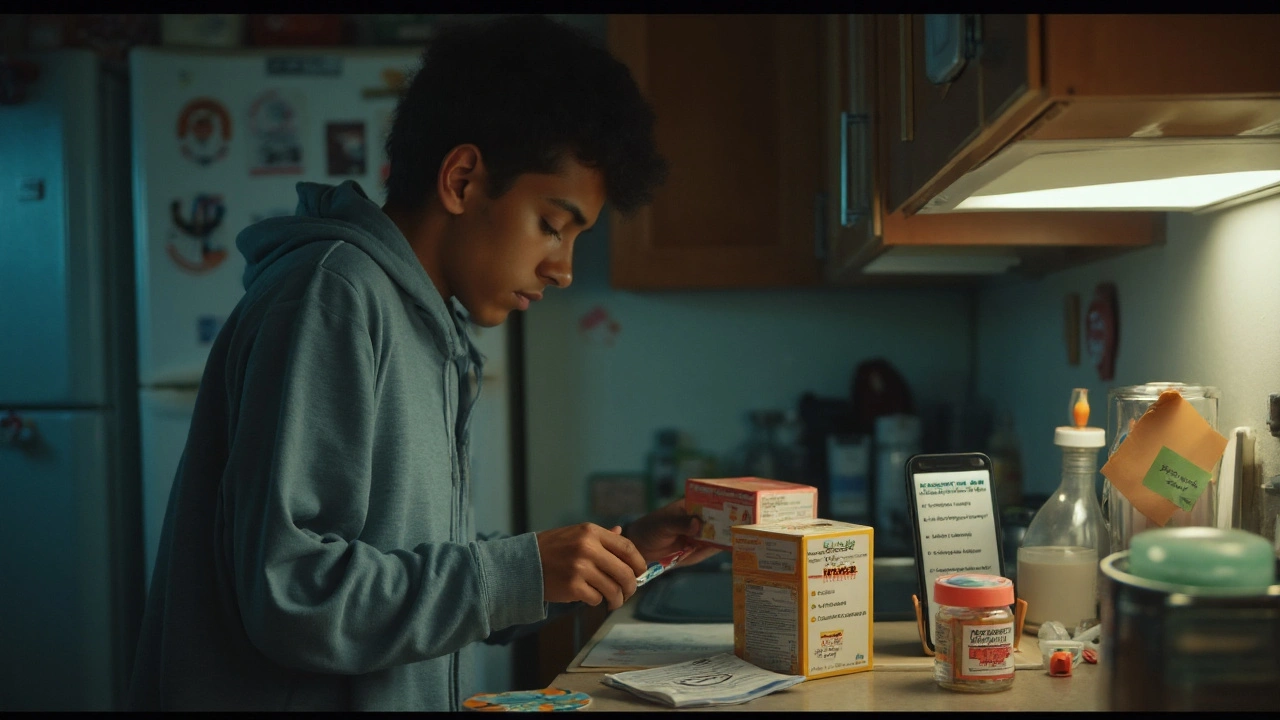Dosing Guidelines: How to Take Medications Safely
If you’ve ever felt unsure about how much medicine to take or when to take it, you’re not alone. Getting the dose right can mean the difference between relief and trouble. Below you’ll find straight‑forward tips that help you stay safe, whether you’re dealing with painkillers, a daily prescription, or an over‑the‑counter product.
Read the label and the interaction chart
First thing’s first: look at the label. The dosage amount, timing, and any food warnings are usually printed right on the bottle. If the label mentions a “drug interaction chart,” give it a quick scan. Those charts use colors or symbols to show which meds clash. Blue might mean “safe,” red means “avoid.” Knowing the basics saves you from accidental mix‑ups.
When a new prescription arrives, ask the pharmacist to walk you through the chart. It only takes a minute, and you’ll leave with a clear picture of which drugs you can pair and which you should keep apart.
When to adjust or substitute
Sometimes you need to change a drug. Maybe you run out of a brand‑name pill, or a generic is cheaper. Before swapping, check the “drug equivalents” guide. It tells you if the generic has the same strength and ingredients. If the guide says the dose matches, you can switch safely. If you’re unsure, a quick call to your doctor or pharmacist clears things up.
Pay attention to special cases like painkillers. Stronger meds often need a lower dose than milder ones. The “how painkillers work” guide explains that a higher dose doesn’t always mean faster relief—it can increase side effects. Start low, see how you feel, then adjust if needed.
For chronic meds, never change the dose on your own. Even a small tweak can affect how the medicine works in your body. If you miss a dose, the rule of thumb is: take it as soon as you remember unless it’s almost time for the next one. In that case, skip the missed dose and continue as normal. Doubling up can lead to trouble.
Another common question is when to take meds with food. Some tablets need an empty stomach for proper absorption, while others are gentler on the gut with a meal. The label or a quick chat with your pharmacist will tell you which side of the bowl to choose.
Keep a simple list of all the medicines you’re using—prescription, over‑the‑counter, and supplements. Write down the name, dose, and time you take each. This list becomes your personal dosing guide and helps anyone who needs to check your meds.
If you travel or switch time zones, adjust the schedule based on the new local time, not the old one. For example, if you take a pill every 12 hours, set an alarm for the new times instead of trying to keep the old clock.
Finally, trust your body. If you feel dizzy, unusually sleepy, or notice a new rash after a dose, stop the medication and contact a health professional right away. Those could be signs the dose is off or an interaction is happening.
By reading labels, using interaction charts, checking drug equivalents, and keeping a clear schedule, you’ll stay on top of your dosing guidelines without any guesswork. Stay safe, stay informed, and let these simple steps guide you to better health.
Self‑Medication: Where to Draw the Line? Safe OTC Use, Red Flags, and When to See a Doctor
Posted by Kayla Susana on Sep, 6 2025

Clear rules for safe self-medication: what you can treat at home, red flags, dosing limits, interactions, and when to get care-practical 2025 guide.
